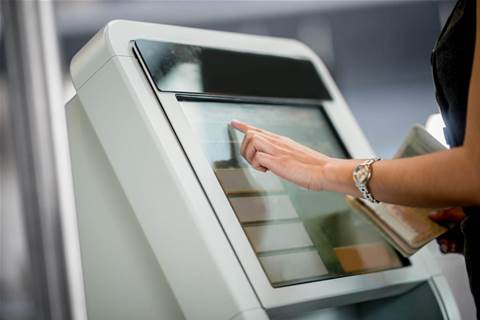Service Victoria to go live in October.
The Victorian government’s chief customer officer Darren Whitelaw freely admits the state has been a laggard when it comes to digital government.
“We are fifth worst in terms of customer satisfaction with government compared to other states and territories,” he told this week’s Australian Digital and Cloud Government Summit in Sydney.
But he argues that being a slow starter means Victoria now has the opportunity to leapfrog its counterparts in NSW, Queensland, and Tasmania.
The state is spending $81 million over four years to build Service Victoria, an agency that follows in the steps of Service NSW and others to offer a one-stop shop for various transactional services currently being delivered by different agencies.
The agency’s technical foundation is being built by Deloitte Digital, and consists of a Salesforce CRM, Sitecore front-end, AWS hosting, and Experian’s address validation tool.
When it goes live, it will propel the state upwards from the 1 percent of government transactions that can currently be completed online.
For comparison, Service NSW - which is on track to reach a target of 70 percent of services transacting digitally by 2019 - has grown to cover 970 different government transactions, and 1.5 million registered users, since it debuted in 2013.
Slow steps toward big goals
Victoria is at the very start of this journey. While it has lofty ideals - of a digital experience tailored to individual users - it first has to “poke holes” in all the silos that have existed for many years.
Across Victoria there are currently around 538 government websites, excluding those for local councils and schools. Whitelaw says there’s no visibility over how much they cost to run or how many people are running them.
Meanwhile the cost of delivering transactions is set to rise over the next decade by an extra $252 million per year, he says, and a population increase means growing load on government services; an extra 1000 cars are being registered every week in the state, for example.
“Our promise to the citizen at the moment is: our information is online, it’s up to you to go and find it,” Whitelaw said.
“[And] customers have told us: 'government is frustrating, confusing, time-consuming, I hate you government’.”
Personalisation
While Service Victoria is chasing the concept of a single whole-of-gov model, it wants to go a step further, and tailor the citizen experience to the specific individual.
Around 52 percent of Victorians with a boat licence also have a fishing licence, Whitelaw said. A Service Victoria account would prompt a person to renew their fishing licence on renewal of their boat registration.
“If I’m a 40-year-old male, why is a senior’s card in the list of things being presented to me?” Whitelaw said.
“Even if we don’t know much about you personally, we can use things like location - if you’re coming from a desktop on a CBD-based IP address, the homepage will show you a photo of Melbourne City Square. If you’re coming from the Western part of Victoria, there’s cows in a green field.”
The agency has spent the past six months - and half a million dollars - on user research to work out what citizens want from their government services.
It has sliced and diced data from 2500 respondents so far to segment the user base by digital literacy and needs and wants, and says it will continue to test and refine as it goes.
Whitelaw notes the agency is currently on version 14 of its in-development online homepage. He argues this iterative approach is key to avoiding the expensive IT headaches the state has experienced in the past: a 2011 Ombudsman’s report famously revealed the state’s 10 biggest IT projects were collectively $1.44 billion over budget.
“We’re after small incremental wins. We understand the concept of a sunk cost. We need to do things differently or we’re going to keep repeating past mistakes,” Whitelaw said.
“Big bang works for no-one when there’s risk involved.”
Transforming 100-yr-old transactions
The difficulty of the whole-of-gov model, Whitelaw says, is less so in the technological underpinning of modernising hundred-year-old transactions, but more in getting similarly-aged thinking around these processes up to date.
The foundations of services like applying for a drivers, boat, or gun licence are fundamentally the same, he says.
“We are separating the difference between ‘oh, that’s the law, you have to do it this way and have a signature on the form’ - and asking ‘is that the law, or the lore’? And almost always it’s the lore.”
He cited an experience working with Victoria Police on digitising gun licences. Digging into opposition to the modernisation effort, his team discovered the force was less concerned with someone physically proving their ID, than about being able to put them through a sniff test.
“The police said 'you can’t do it digitally, you’ve got to come in and prove your ID'. But from long, robust conversation we found out that it’s not about proving ID, the police just want to see if the person is someone they should not be giving a gun to,” Whitelaw said.
For this reason, applying for a gun licence is unlikely to be a fully end-to-end digital process: Whitelaw said Service Victoria would not "take away professional judgment”, but rather “reorder [the process] in a way that’s easier for the customer’.
He also indicated that Service Victoria’s positioning within the state Department of Premier and Cabinet meant it could potentially change laws should they be hindering the delivery of digital service.
The one-stop shop for digital government transactions will begin operations under a public beta in October. A presentation delivered by Whitelaw indicated it will exist at www.service.vic.gov.au (address not currently live).
